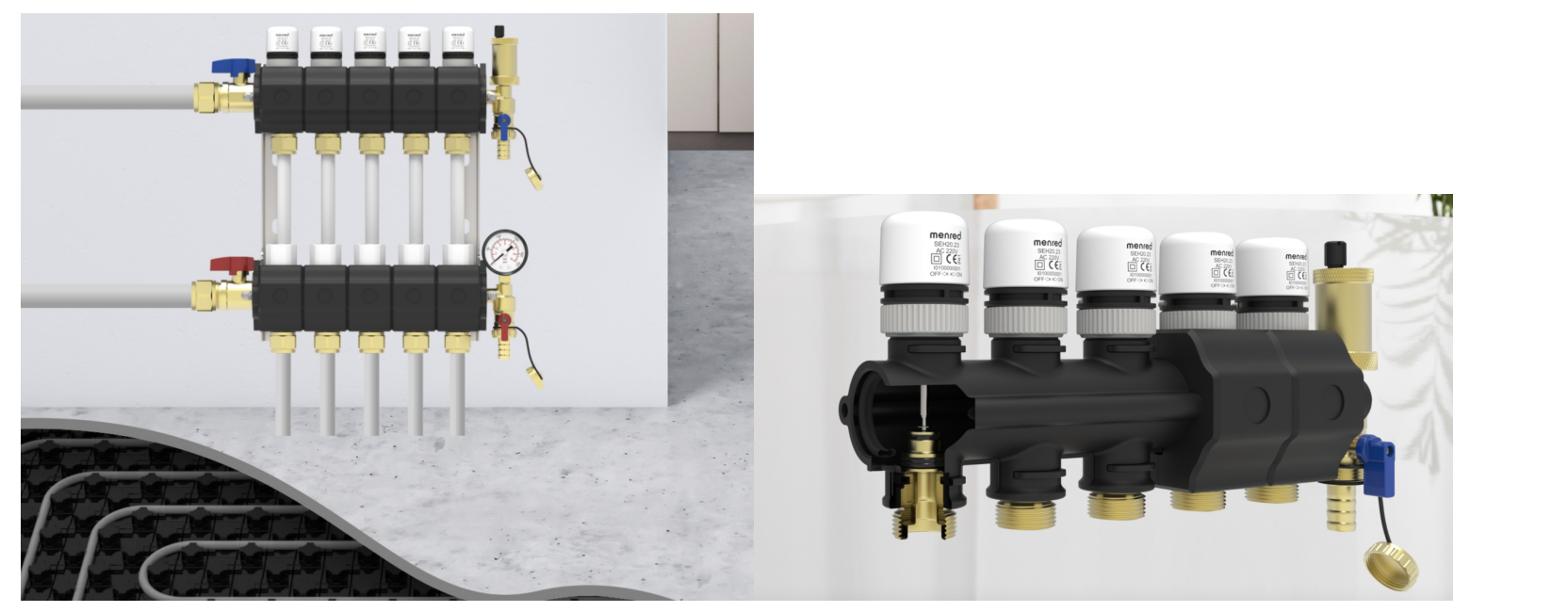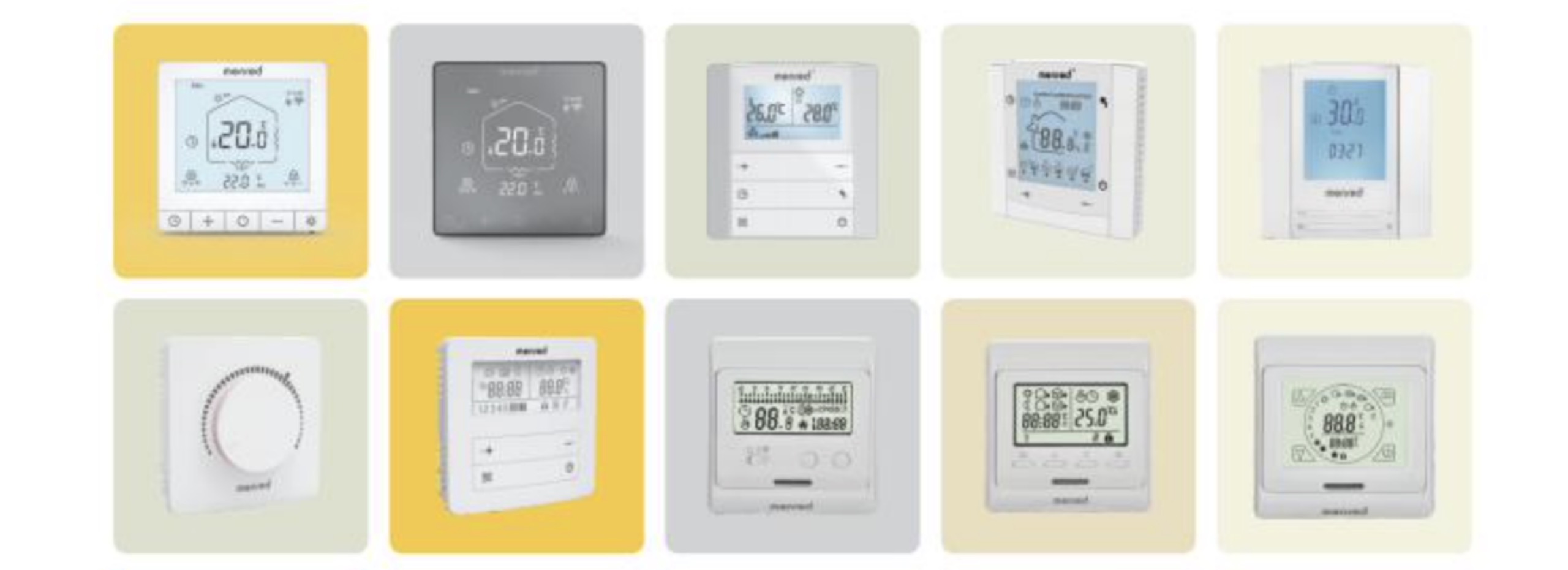Questions and Answers about Underfloor Heating
views: 1852 time: 2024-09-21
views: 1852 time: 2024-09-21
Do I need a manifold for underfloor heating?
Yes, a manifold is essential for an underfloor heating system. It acts as the distribution center for hot water, directing it to various loops of PE-RT or PE-Xa pipes installed under the floor. Without a manifold, the system would be unable to evenly distribute heat, leading to hot spots in some areas and cold spots in others.
A typical manifold consists of:
Inlet and outlet connections: The inlet connects to the heat source (such as a gas boiler or heat pump), delivering hot water, while the outlet returns cooled water back to the heat source.
Flow control valves: These valves regulate the water flow to each loop, ensuring that each area receives the correct amount of heat.
Temperature control valves: These allow for different temperature settings in various zones, providing personalized comfort,with the installation of thermal actuators on each manifold and connection to the room thermostat.

Where is the best place to put the underfloor heating manifold?
The placement of the manifold is crucial for optimal performance. Here are some recommendations:
Central location: Ideally, install the manifold in a central position within the house. This reduces the length of pipe runs, improving efficiency and ensuring an even distribution of heat.
Utility rooms or closets: Many homeowners opt to install the manifold in utility rooms, closets, or other less-used areas to keep it out of sight and avoid disrupting living spaces.
Proximity to the heat source: Ensure the manifold is close to the heat source to minimize heat loss and reduce water flow resistance.
It's also important to leave adequate space around the manifold for maintenance and inspection.
What is the most economical way to run underfloor heating?
Running underfloor heating economically involves several factors, including the type of heat source, control systems, and usage habits. Here are some practical tips:

Should I have my underfloor heating on all day?
Whether to keep underfloor heating on all day depends on your lifestyle and routines. If you have a consistent schedule and spend most of your time at home, leaving it on may be suitable for maintaining comfort. However, consider the following:
Temperature control: Use a thermostat to adjust the temperature based on your needs, avoiding overheating.
Operating costs: Continuous operation can lead to higher energy bills, especially in areas with high electricity rates.
Adaptability to the environment: In regions with fluctuating weather, it can be more efficient to adjust the temperature according to outdoor conditions.
Generally, it's advisable to lower the temperature when not needed rather than turn the system off completely. This can save energy while maintaining a comfortable baseline temperature.
What is the problem with underfloor heating?
While underfloor heating has many benefits, there are some potential issues:
High installation costs: The initial investment can be significant, especially for retrofitting projects.
Slow temperature response: The system can take several hours to heat from a cold state to a comfortable level.
Maintenance complexity: If leaks or failures occur, repairs can be labor-intensive, especially if the system is installed beneath flooring.
Material limitations: Some floor coverings (like thick carpets) may hinder heat transfer efficiency.
On the other hand, once installed, underfloor heating offers several significant benefits compared to other heating methods:
Comfort: Underfloor heating provides even heat distribution, creating a consistently warm environment that enhances comfort levels throughout the room.
Quiet operation: Unlike traditional radiators or forced air systems, underfloor heating operates silently, without the noise of fans or clanking pipes, contributing to a more peaceful home.
Energy efficiency: This heating method can be more energy-efficient work together with heat pump or condensing boilers, as it operates at lower temperatures while still providing effective heat. This can lead to lower energy bills and a reduced environmental footprint.
Overall, underfloor heating is a comfortable, quiet, and energy-efficient option for maintaining warmth in your home.

Why is underfloor heating so slow?
The slower response of underfloor heating can be attributed to several factors:
Thermal mass: Materials like concrete and tile have a high thermal mass, requiring time to absorb and release heat.
Covering layer impact: The type and thickness of floor coverings can affect heat transfer rates. Thicker carpets or wooden floors can slow down the heating process.
Temperature differential: If the water temperature is set too low, the warming process will be slow. It’s essential to set the water temperature appropriately to enhance efficiency.
By designing the system properly and utilizing effective controls, while underfloor heating may be slow to respond, once it reaches the desired temperature, it can provide lasting comfort.